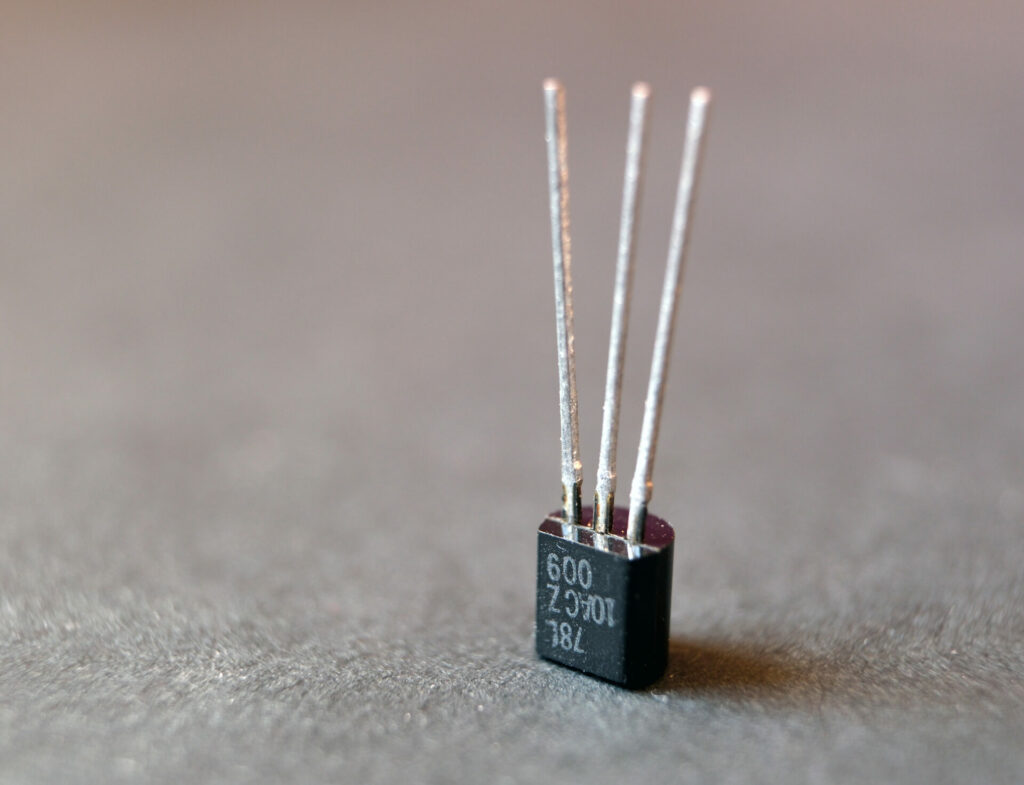ate NPN-based commutations into various product lines, including push buttons and capacitive switches. These outputs provide a reliable and safe switching mechanism for applications across industries.

WHAT IS AN NPN TRANSISTOR?
NPN transistors switch to ground when activated, a design distinct from traditional mechanical switches. There are two possible states for an NPN transistor:
- Idle state: The output reflects the power supply’s positive terminal.
- Active state: The output connects to the ground, completing the circuit.
This configuration ensures predictable current flow and enhanced safety.

WHAT DOES NPN MEAN?
An NPN transistor is widely used in electronic circuits. It is a three-terminal semiconductor device made of two n-type semiconductor materials separated by a thin layer of p-type material. The three terminals are: Emitter (E), Base (B) and Collector (C)
Working Principle
The NPN transistor operates based on the movement of electrons: when a small current flows into the base terminal, it allows a much larger current to flow from the collector to the emitter.
NPN VS. PNP: WHAT’S THE DIFFERENCE?
NPN and PNP transistors may look similar, but their behavior in a circuit is fundamentally different, driven by the direction of current flow:
- NPN transistors: These transistors “sink” current by grounding the load. Current flows from the collector (positive terminal) to the emitter (ground) when a small voltage is applied to the base.
Example: Imagine an LED connected to the positive terminal of a power supply. When the NPN transistor activates, it grounds the circuit, causing the LED to light up. - PNP transistors: These transistors “source” current by connecting the load to the positive supply. Current flows from the emitter (positive terminal) to the collector when a small negative voltage is applied to the base.
Example: Picture a relay connected to ground. When the PNP transistor activates, it delivers current from the positive terminal, powering the relay.

In modern systems, NPN transistors are the preferred choice for their compatibility with grounding logic and superior safety. On the other hand, PNP transistors are often reserved for legacy systems or applications requiring positive-side switching.

HOW TO SAFELY CONNECT AN NPN OUTPUT
Step1: Understand the wiring
Connect the load (e.g., LED, relay) between the output terminal and the positive terminal of the power supply.
The output grounds the circuit when activated, allowing current to flow through the load.
Step 2: Consult product documentation
Each APEM series has unique wiring configurations. Always refer to technical brochures for precise instructions.
Step 3: Ensure compatibility
- Verify the load’s voltage and current ratings align with the switch specifications.
- Add a pull-up resistor if needed to stabilize inactive output signals.
WHY CHOOSE NPN TRANSISTOR OUTPUTS?
Reliability, safety, and versatility define NPN transistor outputs, with a solid-state design ensuring durability, grounding mechanisms minimizing short-circuit risks, and adaptability making them ideal for industries like construction machinery, material handling or medical devices.
APEM’S NPN-BASED PRODUCTS
APEM’s switches leverage the benefits of NPN outputs, offering a range of solutions for different needs:

PBA series
Piezoelectric switches, sealed to IP68 or IP69K with custom configuration.

CP Series
Robust capacitive switches for durable applications.

IHS Series
Pushbutton switches designed for ergonomic and reliable control.

CG Series
Capacitive switches offering sleek design and robust performance.
EXPLORE NPN SOLUTIONS WITH APEM
Discover our extensive catalog or contact our experts for tailored advice. Request a sample today and experience the APEM difference firsthand.



